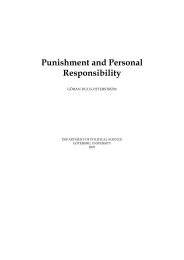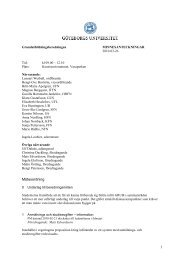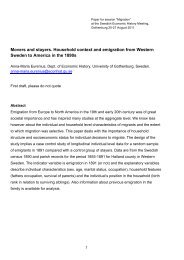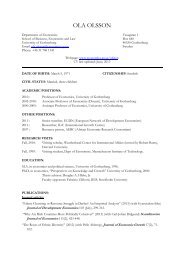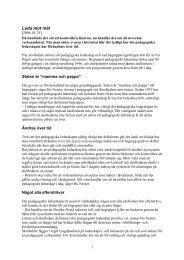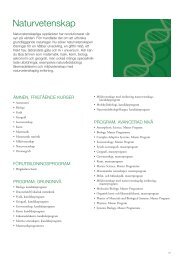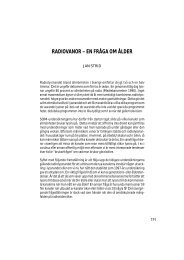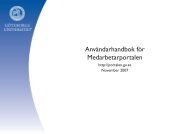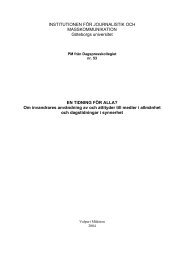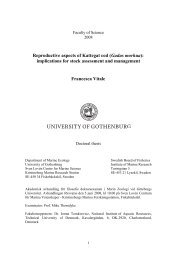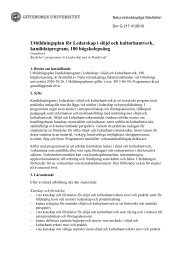Equal Opportunities Work - Theories about Practice
Equal Opportunities Work - Theories about Practice
Equal Opportunities Work - Theories about Practice
Create successful ePaper yourself
Turn your PDF publications into a flip-book with our unique Google optimized e-Paper software.
The gender perspective and equal opportunities work<br />
1. Introduction<br />
This text is a study of the different relationships between gender research and<br />
equal opportunities work in practice. At least at first glance it may seem<br />
surprising that we would wish to examine the problem complex relating to<br />
gender analysis and equal opportunities work, since from a historical point of<br />
view gender research grew out of women's studies and research into equal<br />
opportunities. However, development in both these disciplines has given rise to<br />
a situation in which we must, in fact, re-examine the various ties that bind them.<br />
The three standpoints expressed by the Swedish powers that be and described<br />
below form the point of departure for this section:<br />
1. The Swedish authorities maintain that gender research raises the quality<br />
of all research, for two reasons: firstly because it expands perspectives in<br />
scholarly research, contributes new knowledge, etc. and secondly because<br />
gender research encourages equality of opportunity.le<br />
2. The Swedish authorities maintain that encouraging coursework with a<br />
gender perspective is one way of putting equal opportunities into practice. The<br />
Higher Education Agency, for example, was commissioned by the government<br />
to draw up courses relating to gender for the undergraduate degree programs in<br />
law and economics. The government also encourages the application of the<br />
gender perspective in studies in all undergraduate disciplines.2o<br />
3. The Swedish authorities also maintain that it is possible to formulate<br />
equal opportunities work both with and without a gender perspective.<br />
These three assertions indicate three problem complexes that are often<br />
confused with one another. Each of them contains, in its turn, a number of<br />
conceptual difficulties. This text goes on to analyze these conceptual issues<br />
and to discuss questions of the following type: Is it implicit in equal<br />
opportunities work to encourage courses and research with a gender<br />
perspective? Is offering courses with a gender perspective one way of<br />
19 Offi"iul government communicatio n 1999120(nl:24, Jiimstiilldhetspolitiken inf6r 2000-taler, (.<strong>Equal</strong><br />
<strong>Opportunities</strong> Entering the Twenty-First Century" p. 65).<br />
20 rura. p. os.<br />
2l




